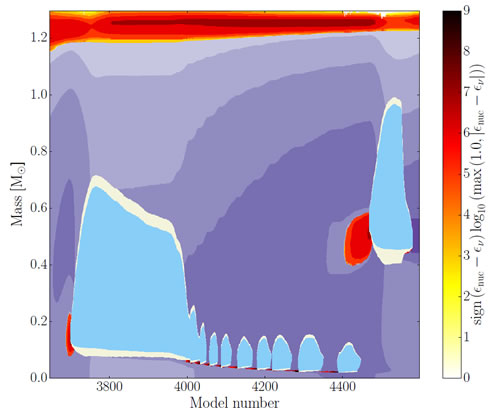Dr. Frank Timmes awarded a Simons Fellowship in Theoretical Physics
March 2015
Dr. Frank Timmes, professor in the School of Earth and Space Exploration at Arizona State University and one of four principal investigators for JINA-CEE, has been awarded a Simons Fellowship in Theoretical Physics for Fall 2015 and Spring 2016. The Fellowship provides funding to allow a faculty member to extend an institutionally-approved sabbatical to a full academic year with the intent of providing strong intellectual stimulation and leading to increased creativity and productivity in research. Simons Fellows are chosen based on research accomplishment in the five years prior to application and the potential scientific impact of the fellowship.
Timmes, whose research foci are the progenitor evolution, explosion and nucleosynthesis of supernovae and cosmic chemical evolution, plans to use his academic year sabbatical to advance his JINA-CEE research activities. "I am very excited about the opportunity provided by the Simons Fellowship. It will give me the time and flexibility to pursue collaborations with colleagues as research projects unfold", said Timmes, who plans to visit the Kavli Institute for Theoretical Physics at UC Santa Barbara, as well as experts in nuclear astrophysics at Michigan State University and the University of Notre Dame. "I feel fortunate because very few organizations fund sabbatical research in Theoretical Physics", Timmes said of the award. "I am grateful to the Simons Foundation for their support of our field".
The Simons Foundation is a private foundation based in New York City, incorporated in 1994 by Jim and Marilyn Simons. Its mission is to advance the frontiers of research in mathematics and the basic sciences by sponsoring a range of programs that aim to promote a deeper understanding of our world. The Simons Foundation Mathematics and Physical Sciences division, established in 2010, supports research in mathematics, theoretical physics and theoretical computer science and provides funding for individuals, institutions and science infrastructure, including the Simons Fellows.
Simons Fellows Awardees: Theoretical Physics
JINA-CEE, March 2015
